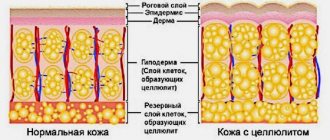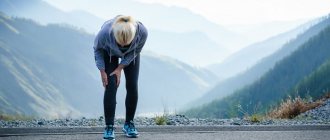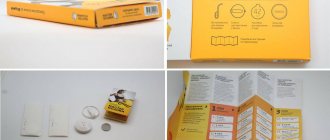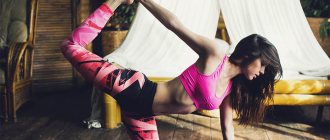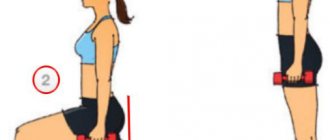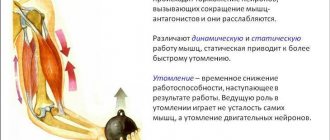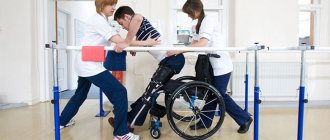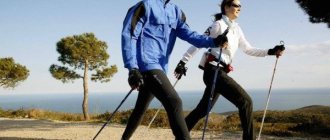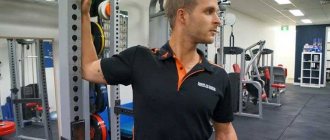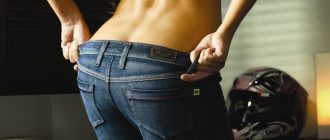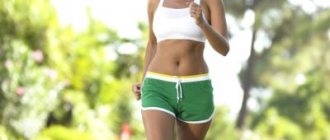Gait Disorders - An Overview
Here is a brief overview of the symptoms associated with walking disorders and possible causes of the disease. Individual points will be described in more detail below:
- Definition: If the gait pattern or walking speed deviates from typical movement patterns appropriate for age and height, a gait disorder is said to exist. Impairments can range from mild limping to loss of the ability to walk independently.
- Symptoms: Decreased gait speed, inconsistency, deviation, or abnormal gait such as waddling, limping, and stumbling.
- Causes: There are many different diseases and symptoms that can cause problems with walking. Causes may be neurological, internal, psychological or orthopedic.
- Neurological causes: Parkinson's disease, multiple sclerosis, peripheral nerve damage (polyneuropathy), inner ear complaints, vitamin B12 deficiency, stroke, brain tumor, inflammation (eg due to Lyme disease), brain damage due to alcoholism.
- Internal causes : changes in the blood vessels in the legs, peripheral artery disease (PAD), hardening of the arteries (atherosclerosis).
- Psychogenic causes: psychogenic tremor, psychogenic dystonia (movement disorder), psychogenic myoclonus (muscle cramps), psychogenic parkinsonism, psychogenic gait disorder, post-traumatic stress disorder (PTSD).
- Orthopedic causes: wear and tear of the joints (arthrosis), spinal stenosis, rheumatic diseases, muscle weakness, herniated disc, trauma such as a femur fracture or other bone fractures in the legs and feet.
Back lunges from the step
Performing a step back from a platform is considered the most difficult technique due to the increased range of motion. This option perfectly develops balance and puts even more stress on the gluteal muscles and hamstrings. It also stretches the quadriceps more.
Technique:
- Stand on a step platform (or any equivalent with a stable surface). Hold dumbbells in your hands, feet shoulder-width apart, back straight.
- Take a long step back, gently lowering your foot to the floor.
- Bend both legs at the knee until the knee of the back leg approaches the floor (3-5 cm).
- Without pausing, slowly return to the starting position.
With this technique, you need to understand how to do the abduction. The lowering of the leg should be soft and controlled, without falling (this will increase the load on the joints and spine). Also try to avoid pushing off with your back foot when returning to the platform.
What does a normal gait look like?
A healthy gait is characterized, on the one hand, by walking speed, and on the other, by a harmonious gait. With a healthy gait, adults walk on average about 2.5 meters per second. In old age, this value can drop to about 1.5 meters. This is not a problem and is part of the normal aging process. If there are regular inconsistencies, deviations, or irregularities in your speed or gait, you may have difficulty walking. A harmonious gait is characterized by the following aspects:
- Smooth and symmetrical movements,
- Waving your arms
- Leg spacing is normal (not too wide apart and not too close together),
- The stride length is normal and stable (people with a height of 1.50 to 1.70 meters have an average stride length of 60 cm; people with a height of 1.70 to 1.90 meters have an average of 70 cm),
- Legs do not rise too high or not enough when walking.
There are many reasons for problems with walking
The level of gait disturbance can vary greatly among affected individuals. Problems range from a slight limp or unsteady gait to very noticeable gait disturbances in which victims can barely walk. Accordingly, many reasons can be questioned as possible triggers associated with gait disorders, so in any case, the disorder should be determined by a doctor in order to find out what exactly caused the problems with walking.
Why cut?
Young couples are often unfamiliar with the ritual of cutting bonds.
However, the older generation believes that holding it will allow the baby to go on time.
The ritual dates back to pre-Christian times , when it was believed that souls come into this world many times.
The deceased person's arms and legs were tied with fetters until they were completely numb. This was done to prevent the body from falling apart. Then they were removed and placed in a coffin.
It was believed that when a child is born again, it is as if he were confused. His soul is close to the afterlife and can return there at any time.
By all indications, the child is more dead than a living person, since he is always in a horizontal position, does not speak, lies swaddled, cannot eat regular food, and is washed. His connection with the underworld is still too strong.
However, the baby is growing, learning to raise its head, laugh, sit down, and take its first steps. It was the vertical position of the baby that indicated that he had finally decided between the worlds and decided to remain in the human one. At this time, a ritual was carried out to cut the deceased’s ropes that had bound his soul all this time. An older woman was called to help him free himself, but the child’s mother could also do this.
Now the ritual is used to facilitate the first steps, so that the baby will let go of his mother’s hand earlier and walk with a confident gait.
Important! Parents want to make their child’s life as easy as possible, and cutting the bonds is one of the possibilities, a wish from loved ones for a long and happy life.
Neurological causes of gait disturbance
When walking disorders associated with neurological problems often occur dizziness and general uncertainty when walking. The balance may be so disrupted that victims temporarily lose consciousness.
Subcortical atherosclerotic encephalopathy
Older people often suffer from subcortical arteriosclerotic encephalopathy, a brain disease caused by vascular changes in which the gait of victims generally appears to be wide-legged, unsteady and awkward. Other complaints associated with this clinical picture are bladder disorders such as bladder weakness up to urinary incontinence and subcortical dementia.
Trendelenburg gait and Parkinson's disease
Another neurological gait disorder is the so-called Trendelenburg gait, in which the victim has a pelvic tilt due to paralysis of the gluteus medius muscle. This may be caused by damage to the supplying nerves. On the other hand, gait disturbance may indicate Parkinson's disease, a neurological degenerative disease that primarily affects the motor skills of those affected. A typical symptom of Parkinson's disease is tremors, which is why in the distant past this disease was called “shaking”.
Stroke and spastic hemiplegia
Stroke patients often suffer from spastic hemiparesis and develop what is called a Wernicke-Mann gait pattern, in which the upper body typically moves to the opposite side to make it easier to lift the spastic leg off the floor.
Other neurological causes
The expression “like a drunk” characterizes the gait of a patient with cerebellar damage, which in many ways resembles the gait of a drunk person; for example, in the case of ataxia, coordination of movements is impaired. Another neurological cause of the disorder's associated gait is the so-called "stepping walk", colloquially referred to as the stork walk. This gait disorder is caused by palsy of the ankle lifts.
Benefits and disadvantages of reverse lunges
In fitness and bodybuilding, the back lunge exercise is considered optional, as one of the variations of regular lunges. This makes the technique less popular, especially for men (although for women it is one of the main exercises in the arsenal for building firm buttocks and thighs).
However, it is a mistake to perceive step-back lunges as a feminine exercise. This movement can significantly improve progress in many exercises (deadlifts, squats, Romanian deadlifts, etc.) by specifically strengthening the hamstrings and glutes. It is also an incredibly effective way to reduce stress on the lower back (by strengthening the gluteus maximus and part of the gluteus medius), which will be useful if you have a sedentary lifestyle or lower back problems.
Main advantages:
- Almost all the muscles of the lower body are worked with one movement.
- The exercise can be performed at home, on the sports ground or anywhere else.
- Forms muscle mass, improves muscle tone and relief.
- Improves balance and coordination.
- The movement is effective both when using heavy weights and when working without weights (in high-repetition mode).
- Leads to muscle stretching, increasing mobility.
- They hardly load the spine, unlike squats.
The disadvantages of lunges with the leg back are conditional , since the exercise has no obvious disadvantages.
- The main disadvantages appear when the technique is incorrect (mainly the load on the knees and back).
- Another drawback is that, despite all the benefits, the exercise cannot compete with squats in terms of gaining mass and strength. Therefore, it is often used as an additional rather than a main movement.
Walking impairment due to orthopedic reasons
Most walking problems are caused by orthopedic reasons. Damage to the bones, muscles and joints of the legs, legs, pelvis and spine can cause difficulty walking. Walking problems can be caused, for example, by injuries such as bone fractures or wear and tear on joints (arthrosis).
Muscular dystrophy
One of the orthopedic symptoms of walking disorders is Duchenne lameness, in which victims, as a rule, have a need to bend their torso in order to stand. This may be caused by abnormal hip alignment, hip dysplasia, or hip dislocation. Weak gluteal muscles can also cause lameness.
Minor walking impairment
With mild difficulties while walking, patients often complain of numbness in the area from the calves to the feet. Usually, this is due to compression of the nerve; in this case, a neurological examination is performed, measuring nerve conduction velocity, but sometimes it does not give any results.
Tarsal tunnel syndrome
If numbness occurs in the legs, it may be dorsal tunnel syndrome, which is caused by compression of the tibial nerve, which runs along the inner malleolus. Possible causes of this syndrome also include bone fractures, tendonitis in the affected area and arterial circulation problems in the lower leg and therefore also in the nerves.
Lower back problems
The nerves that supply the legs and feet can also seriously limit walking when they are compressed. If you are having difficulty walking, the nerves that run along the lumbar spine should be included in diagnosis and treatment. Therefore, osteopathy takes into account not only the condition of the back and the general statics of the body, but also previous diseases such as slipped vertebrae, back pain, lower back pain or buttock pain. If nerve compression is suspected, polyneuropathy (certain disorders of the peripheral nervous system) and venous disorders should be excluded.
To believe or not to believe in “fetters”?
Parents want only the best for their baby, so that he not only goes on time, but also has a prosperous life. All this makes them argue about the need to follow the ancient ritual and its meaning. There are several opinions:
- Some advocate cutting the bonds. At the same time, they do not necessarily believe in the ritual; they often consider it harmless, and even if it does not bring any benefit, it will not harm.
- Others are negative. For example, pagan rituals are not performed in Orthodox families; this is considered a superstition that does not come from God. It's better to go to church and pray for health.
- Still others don’t believe it and don’t use it, believing that the baby will go on his own in his own time.
It also happens that parents learn about the ritual from the older generation after it has already taken place. In this case, they note that:
- cutting the baby's bonds did no harm, and he walked faster;
- the ritual had no significance.
The ritual itself is not difficult to carry out, and any mother or grandmother can cope with it if desired. However , whether to hold it or not is a personal decision for each family. If it was carried out by relatives from the older generation without the wishes of the parents, you should not be upset. The ritual will not harm in any way; it is carried out solely with good intentions.
Impaired walking due to internal reasons
Problems with walking can also occur if there are changes in the blood vessels, which, for example, can lead to bleeding or poor circulation in the legs.
Peripheral arterial disease (PAD)
Peripheral artery occlusive disease (PAD) is a special type of circulatory disorder that is also known as “window display disease” because sufferers are forced to stop at regular intervals, such as in front of a display case, because they have pain in their leg. Arm pain is less common in this case. Peripheral artery disease is one of the chronic vascular diseases of the arteries and is caused by stenosis (narrowing) or occlusion of the arteries that supply the limbs.
Hardening of the arteries
In more rare cases, the main artery is also affected. Atherosclerosis (hardening of the arteries) is one of the main causes of the disease, the clinical picture of which varies from simple complaints and slight difficulty in walking to gangrene - tissue necrosis requiring amputation. There is a high risk of heart attack here.
Stretching and athleticism
From our point of view, one of the best programs for stretching, which also trains athleticism at the same time, is the program proposed by coach A.E. Yudin.
Before moving on to the description of individual exercises, we recommend that you watch in full a not very long but capacious video , which shows all the relevant exercises:
Important! Stretching should be done gradually and taking into account the physiological characteristics of your body. All the corresponding exercises are designed for a fairly advanced level (in the video, they are performed by a child whose flexibility is initially higher than that of an adult).
Pay special attention to squats and twisting your legs at the knees - for an unprepared athlete (and sometimes even for a trained one), these actions can lead to injury to the knee joints.
In this regard, do not strive to do all these tasks at once and at full amplitude - start small, gradually increasing the load.
Now we present the most successful exercises.
Extended Leg Stretch
We tuck one leg, as in breaststroke, and the other is extended. We alternately bend over and reach for (1) the straight leg, (2) the center, (3) the bent leg.
Springboard
We sit down with both shins turned out - as shown in the illustration below.
A simplified option is to simply sit in this position in order to stretch the ligaments.
A full-fledged option is to straighten the body, as shown in the illustration:
Breaststroke squats
We are in the same starting position as in the previous task. Extend your arms with an arrow pointing upward behind your head.
From this position, without using your hands, we stand on our feet and then sit back , that is, we do squats without stopping:
This exercise trains both stretching and strength - but, as stated above, always be careful about the load on the knee joints.
Backstretch Stretch
We sit in the same starting position and gradually lean back - lie on our back if your current level of stretching already allows, or at least lean back.
Brass basket
We lie down on our chests and grab our feet with our hands, as shown in the illustration:
In this position we rock back and forth .
Narrow breaststroke
We lie on our chest, knees together, feet apart. In this position , we pull our limbs towards ourselves, trying not to spread our knees and keep our feet in their original position.
Squats in first position
We put our feet in the “first position” (spread in different directions) and squat in this position. If it is difficult to squat, then you can at least stand in this position.
Walking disorders due to psychogenic reasons
Psychogenic gait disorders are problems caused by the psyche of the victims. These disorders are classified as dissociative disorders in psychiatry and are much more common than is commonly believed. Causes include psychogenic tremor, psychogenic dystonia (movement disorder), psychogenic myoclonus (muscle twitching), psychogenic parkinsonism, and psychogenic gait disorder. Comorbidities such as anxiety disorders and depression are common.
Rules
It's easier to succeed if you act wisely. Therefore, listen to the recommendations of experts in many videos about pumping the inner thigh.
- You need to start training after warming up;
- At the end of the set of exercises, stretch the muscles of the inner thigh;
- Don't forget about other muscles in your legs and body as a whole when pumping your inner thighs;
- Try to do the exercises correctly, don’t get distracted, pay attention to your technique;
- Periodically (every 2-3 months) change the nature of the load, without allowing the muscles to get used to it;
- Exercise regularly.
By following these rules, you will pump up your inner thighs, strengthen your legs, make them slim, fit, and attractive.
Risk factors that may lead to walking impairment
Because difficulty walking is associated, among other things, with circulatory disorders, which are often associated with smoking, diabetes mellitus, high blood pressure (hypertension) and lipid disorders such as hyperlipidemia and hypercholesterolemia, which are major risk factors for peripheral artery disease. A healthy lifestyle is recommended. This also includes a balanced, low-fat diet and avoiding nicotine.
Wearing tight shoes that do not fit properly can also cause nerve compression in the feet, causing sufferers to become unsure when walking due to a feeling of numbness in the feet.
How to do the splits correctly?
There is a training program that will help you do the splits according to all the rules and not cause harm to the body. It consists of 3 stages:
- Active warming up of the muscles and ligaments of the legs;
- Quick warm-up;
- Exercises for splits.
Before classes, it is advisable to lie in a hot bath or dance vigorously - all this will help the muscles warm up faster.
To warm up the body we do:
- Lunges on both legs (forward and sideways);
- Smooth rolls from foot to foot;
- Push ups.
Exercises are performed for 15 minutes at an active pace. They will help you control your posture during the splits: keep your body straight, secure your body with your hands, and support your feet with your feet.
Diagnostics
When diagnosing a gait disorder, it is necessary to first determine whether the cause is neurological, orthopedic, intrinsic, or psychogenic. First, the doctor examines the patient's gait, observing speed, stride, starting and stopping, contact with the floor, movement of large joints, feet and toes while walking. Another test is to check the number of steps required to turn 180 degrees. In addition, it can be tested whether the patient is able to walk on a tightrope with one leg in front of the other along an imaginary line. To determine possible paralysis, the patient may be asked to walk on their toes or on their tiptoes.
Other tests
Doctors also use something called the Romberg constant test to check balance. Patients should assume a standing position with their feet together and their arms extended straight out in front of them, first with their eyes open and then with their eyes closed. Another way to test gait is the so-called Unterberg step test, in which patients must take about 60 steps with their eyes closed and arms outstretched.
Our tips and recommendations
Once correct posture has become habitual for you, you can begin exercises for correct gait:
- Place a book or a small pillow on your head and try to walk around the room with it, sit on the sofa, stand on one leg. Were you able to hold it? This means you have the correct position of your neck and head. If it doesn’t work out, practice.
- Walk in place without lifting your toes from the floor - this exercise develops your leg muscles well, which is very important for a beautiful gait.
- Imagine that your foot has a semicircular shape. Roll from heel to toe and back.
Install a floor-length mirror in the room, and walk for half an hour a day, observing your posture and the placement of your feet.
If you're ready to put on your heels and walk down the street in style, don't forget:
- Place your feet with your toes apart, otherwise your gait will be clubfoot.
- When placing the foot on the ground, the heel should touch it first (even if for a moment), and only then the entire foot.
- When transferring the center of gravity to the leg, it must be completely straight, otherwise walking “half-bent” cannot be avoided.
- To walk beautifully in heels, your legs must be strong and well-trained, so dance or join the gym.
By gait you can judge a person’s character and his state of mind at the moment. Stress, lack of self-confidence, and fear of appearing funny provoke slouching. Therefore, in order to walk correctly, you also need to think correctly . Remember the heroine of the film “The Most Charming and Attractive”? Convince yourself of your attractiveness, and your gait will instantly improve.
Determination of previous diseases
Previous medical conditions such as injuries, heart attacks, strokes or herniated discs should also be taken into account to determine the cause of difficulty walking. The doctor usually conducts a detailed consultation with the patient in order to narrow the list of symptoms. The consultation also includes questions about feelings and imbalances. Additional research may also be required, such as:
- Eyesight check,
- Hearing test
- Blood analysis,
- Cerebrospinal fluid puncture (examination of the fluid structure of the brain),
- Computed tomography (CT),
- Magnetic resonance imaging (MRI),
- Electroencephalography (EEG),
- Electromyography (EMG).
Treatment Options for Gait Disorders
The appropriate treatment for gait disorders depends on the cause of the complaint. When orthopedic problems occur, good results are often achieved with physical therapy, manual therapy, or physical therapy. More severe cases may require immobilization or surgery. Physical therapy can also give good results.
If circulatory problems are the cause of your walking problems, medications are often prescribed, although surgery may be required depending on the diagnosis. Exercise is also helpful.
If symptoms of gait problems occur along with severe overweight or obesity, you may need to lose weight to improve your gait.
If the cause of walking disorders is a neurological disease such as Parkinson's disease or multiple sclerosis, only symptomatic therapy is possible, since the disease is constantly progressing and there is no suitable cure for the disease based on currently available treatments. Survivors can relieve their suffering through targeted exercise therapy (physical therapy) and physical treatments such as massage or electrical treatments.
If the walking disorder is caused by a psychogenic reason, psychotherapy, which is also accompanied by medication, can help.
Activities that prevent walking disorders
To prevent walking problems caused by back pain, for example in the case of herniated discs, it is advisable to use training suitable for the back, such as specific strengthening or fitness training. Tai Chi is a form of martial art in which upright posture plays an important role. Scientific research also shows that regular Tai Chi training works better than strength training for patients with Parkinson's disease, and regular training also reduces the risk of falls.
A healthy lifestyle with enough exercise can alleviate many of the problems caused by walking disorders. Regular muscle and balance training can have a positive effect on your gait pattern. For example, gymnastics, walking, Nordic walking and tai chi are ideal for this. In addition, you should drink alcohol with caution and as little as possible.
Contraindications
Split exercises place a serious load on the muscles of the legs and pelvis, so before starting training you should familiarize yourself with the contraindications:
- High blood pressure;
- Spinal and hamstring injuries;
- Serious damage to the musculoskeletal system;
- Inflammation of the hip joints;
- The presence of fractures, cracks or bruises in the bones of the legs and pelvic part of the body.
In the absence of contraindications, it is necessary to approach training with caution, warming up the muscles and ligaments in advance with a warm-up.
Types of twine:
The last 3 types differ in transverse and longitudinal - they are performed only by professional gymnasts. This kind of splits cannot be done without the training and supervision of a trainer.
